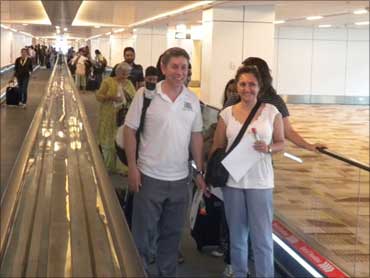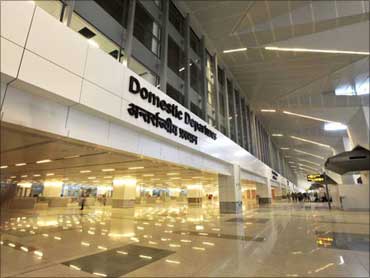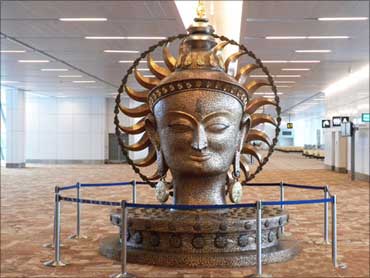 | « Back to article | Print this article |
Delhi's new terminal still not ready
Some airlines had announced that their flights will land at and take off from the swanky terminal from October 30. But executives of GMR-controlled Delhi International Airport Ltd said that the deadline looks difficult, though they are yet to communicate this officially to these airlines.
The executives said there is not enough electricity available to power T3 because the 220-kv sub-station cannot supply uninterrupted power, and the approach road to the airport will see heavy traffic once domestic flights are shifted. T3 needs 250 Mw of power to work without hiccups.
Click NEXT to read more...
Delhi's new terminal still not ready for domestic fliers
Taking a dim view of the postponement, the Civil Aviation Ministry, informed sources said, has called a meeting of all the stakeholders on Monday, including the chairman of Delhi Transco which supplies power to T3.
Another airport source, on the condition of anonymity, confirmed that supply of power has become a stumbling block. "The new sub-station cannot provide the power required to run the airport smoothly. Until and unless that is ensured, it will be very difficult for the airport to cater to the huge number of domestic fliers," said the source.
Click NEXT to read more
Delhi's new terminal still not ready for domestic fliers
Analysts said the delay could have cost implications for Delhi International Airport Ltd and these things can only be fixed by making the government agencies more accountable.
"The huge investment in the new terminal cannot be justified by using a small part of the airport just because of electricity problems," said Centre for Asia Pacific Aviation CEO Kapil Kaul. "Had the company missed the deadline, it would have been fined; but there is no such fine for the agency responsible for supplying power."
Click NEXT to read more
Delhi's new terminal still not ready for domestic fliers
Terminal 2 is lying unutilized ever since the international operations were shifted to T3. Full-service carriers like Air India, Jet Airways and Kingfisher Airlines, along with their low-cost subsidiaries, JetLite and Kingfisher Red respectively, were supposed to shift to T3 first.
The other low-cost carriers - IndiGo, GoAir and SpiceJet - were to operate from the current domestic terminal (1D) till March next year. Immediately after T3 was inaugurated, Delhi International Airport Ltd had carried out test flights to prove the capability of the airport.
On July 14, the earlier date of starting international operations, seven arrivals and departures took place. The next day, the world's biggest passenger aircraft, the Airbus 380, had arrived at the airport for a trial flight - a first for India.
Click NEXT to read more




